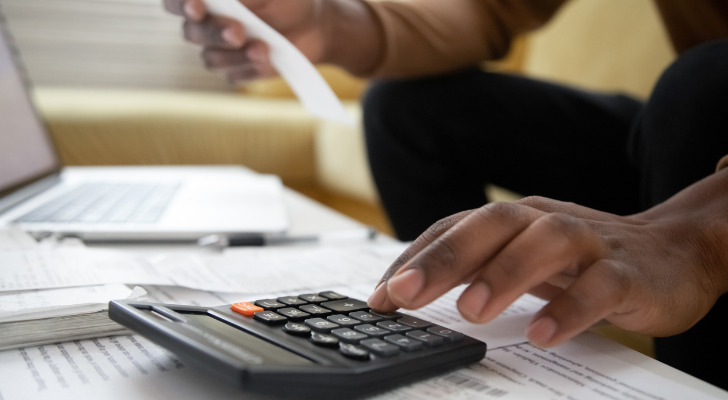Choosing the right budgeting system can make it easier to stick to a monthly spending plan. The envelope saving method, also referred to as the cash envelope method or cash envelope budgeting, can help you get control over your money if you’ve struggled with overspending. This budgeting system involves setting aside cash in specific budget categories each month. You can also use a variation on the envelope method to build savings.
For more help with budgeting or other money questions, consider working with a financial advisor.
What Is the Envelope Saving Method?
The envelope saving method is a budgeting system popularized by financial guru Dave Ramsey. This budgeting approach involves allocating cash into envelopes each month, earmarking each one for different spending categories.
The idea is that by dividing up cash into envelopes, it’s easier to track expenses and avoid overspending. Research has shown that spending with cash forces you to be more conscious about your financial decision-making, versus spending with debit or credit cards.
Cash envelope budgeting means you’re not relying on plastic to pay for expenses. You can only spend the cash that’s in the envelope. Once an envelope is empty, you can’t spend any more money in that budget category for the month.
How the Envelope Saving Method Works
The cash envelope budget isn’t that difficult to set up. It involves deciding which cash envelope categories to include in your budget and how much cash should go into each envelope.
Envelope saving is usually intended for variable spending, rather than fixed expenses. Your fixed expenses are things that don’t change from month to month, such as:
- Rent or mortgage payments
- Utility bills
- Internet and cellphone bills
- Insurance
These are bills you might pay online with your debit card or through an automatic bank draft each month.
Variable expenses are expenses that may not be the same each month. That includes things like groceries, gas and transportation, dining out, personal care and recreation. You’d set up cash envelope categories for these types of expenses.
So how much cash goes into each envelope? The answer depends on your total budget and how much your variable expenses add up to. Again, the same rule applies once all the cash is gone, you can’t spend anything else in that category until the next budgeting period begins.
Envelope Saving Method Example

Using envelopes to budget can take some time to adjust to if you’re used to spending with a debit card or credit card. So here’s a simple example of how the envelope saving method works. Say that you have $5,000 per month in take-home pay. Of that amount, $3,000 goes toward fixed expenses and debt repayment, while $500 goes to savings. That leaves you with $1,500 to cover your variable expenses.
You divided that among your cash envelope categories along these lines:
- $700 for groceries
- $300 for gas and transportation
- $100 for personal care
- $100 for dining
- $100 for gifts
- $100 for recreation and entertainment
- $100 for miscellaneous expenses
Altogether, that’s seven cash envelopes to manage. Now, what happens if you don’t spend all the money in your envelopes each month?
There are two approaches you can take. First, you can reallocate any leftover funds into your cash envelopes for the next month. So if you have $100 left in your grocery envelope, for example, you could add that to your grocery envelope for the next month and have $800 to spend instead of $700. Or you could add it to one of your other envelopes instead.
The other option is to use any leftover cash to either pay down debt or fund your savings. Even if it’s only a small amount, say $25 or $50, that could help you to get out of debt or grow your savings a little faster.
Envelope Budgeting Pros and Cons
Using cash envelopes to budget can give you more control over your money since it requires you to keep track of every dollar. You might appreciate that if you’ve tried budgeting using other methods and always seem to run out of money before the month’s end.
On the other hand, cash envelope budgeting can be more time-intensive than other budgeting systems. You also have to be comfortable carrying cash around with you.
There are budgeting apps that allow you to use cash envelopes without the cash, however. You can set up cash envelopes through the app, then link the app to your debit card. This way, you’re still tracking expenses but you’re not having to keep large amounts of cash on you.
How to Start the Envelope Saving Method
If you’d like to start using the envelope method to budget, the first step is knowing what you spend in a typical month. Tracking your expenses for 30 days can help you see exactly where your money is going. You can write down expenses, review your bank statements or use a personal finance app to monitor your accounts.
Once you know what you spend, the next step is comparing that to your income. This step is essential to make sure you’re not spending more than what you make each month. If you are and are charging purchases to credit cards to create debt, then you need to address that first before starting the envelope saving method.
Assuming your expenses are less than your income, you can then decide what cash envelope categories to include. Again, these will be your variable expenses that aren’t regular, fixed bills. The final step is setting an amount for each cash envelope.
As you spend money from each envelope, you can jot down the purchase amount and reason on the back of the envelope. You’d also deduct each amount from your cash total as you go. That way, you can see at a glance how much cash you have in each envelope.
You can divide up cash envelopes for the entire month if you have the cash to fill them. Or you can assign cash to your envelopes each pay period. That might work better for you if you’re paid biweekly or on the 1st and 15th of each month. The method doesn’t matter so much as sticking with the envelope system and not spending more than you’ve allowed yourself to spend for each category.
How to Use the Envelope Method to Save
Traditionally, the envelope method has been associated with budgeting. But you can also use envelopes to grow savings. The 100 envelope challenge, for example, involves setting aside small amounts of money in an envelope daily. You start with 100 envelopes, numbered 1 to 100. Each day, you’d choose an envelope, then add cash equal to the number on the front. So if you pull envelope 22, you’d put in $22 in cash. Or if you pull envelope 94, you’d add $94.
Over a period of 100 days, this challenge can help you to save $5,050 in cash. You might use this envelope saving method if you have the cash to spare and you want to kickstart your savings in a hands-on way.
Bottom Line

The envelope saving method can help you rein in wasteful spending and encourage savings each month. If you don’t want to pay cash or that’s not realistic because of how you get your paychecks, you could try digital envelopes instead using a budgeting app. The most important thing is to find a budgeting system that works for you.
Financial Planning Tips
- Consider talking to a financial advisor about whether using the envelope method to budget and save makes sense for your situation. Finding a qualified financial advisor doesn’t have to be hard. SmartAsset’s free tool matches you with up to three financial advisors who serve your area, and you can interview your advisor matches at no cost to decide which one is right for you. If you’re ready to find an advisor who can help you achieve your financial goals, get started now.
- You can also use envelopes to hold money for sinking funds. Sinking funds are savings toward planned expenses, such as vehicle repairs, pet care bills you pay quarterly, bi-annually or annually. Saving for these expenses in small amounts monthly can help you be better prepared to pay them once those bills are due.
Photo credit: ©iStock.com/Hispanolistic, ©iStock.com/shih-wei, ©iStock.com/fizkes
